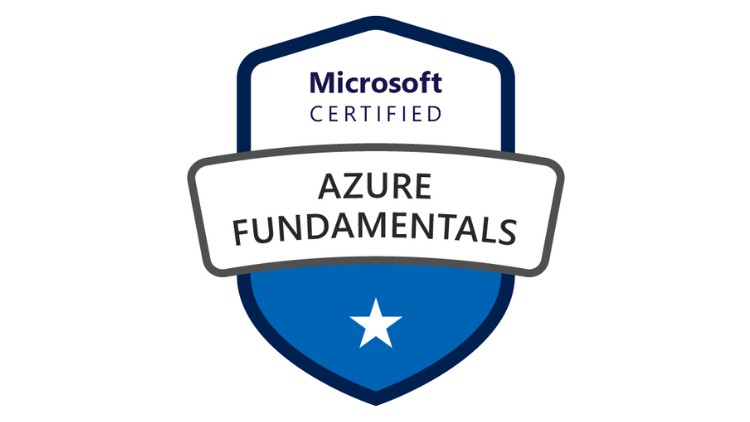
Ace your AZ 900 with these Practical Hand Curated Questions … May 2022 updates
What you will learn
Students preparing for the Microsoft Certified: Azure Fundamentals exam [AZ-900]
Candidates with non-technical backgrounds who are interested in learning about the cloud
Students who want to test their skills in exam simulation, assessing their AZ-900 exam readiness
Candidates with technical backgrounds who are interested in getting more advanced certs in the future
Description
Exam AZ-900: Microsoft Azure Fundamentals – Skills Measured
NOTE: Passing score: 700.
Module1: Describe cloud concepts (25–30%)
Describe cloud computing
- define cloud computing
- describe the shared responsibility model
- define cloud models, including public, private, and hybrid
- identify appropriate use cases for each cloud model
- describe the consumption-based model
- compare cloud pricing models
Describe the benefits of using cloud services
- describe the benefits of high availability and scalability in the cloud
- describe the benefits of reliability and predictability in the cloud
- describe the benefits of security and governance in the cloud
- describe the benefits of manageability in the cloud
Describe cloud service types
- describe infrastructure as a service (IaaS)
- describe the platform as a service (PaaS)
- describe software as a service (SaaS)
- identify appropriate use cases for each cloud service (IaaS, PaaS, SaaS)
Module 2: Describe Azure architecture and services (35–40%)
Describe the core architectural components of Azure
- describe Azure regional, regional pairs, and sovereign regions
- describe availability zones
- describe Azure datacenters
- describe Azure resources and resource groups
- describe subscriptions
- describe management groups
- describe the hierarchy of resource groups, subscriptions, and management groups
Describe Azure compute and networking services
- compare compute types, including container instances, virtual machines (VMs), and functions
- describe VM options, including Azure Virtual Machines, Azure Virtual Machine Scale Sets, availability sets, and Azure Virtual Desktop
- describe resources required for virtual machines
- describe application hosting options, including the Web Apps feature of Azure App Service, containers, and virtual machines
- describe virtual networking, including the purpose of Azure Virtual Networks, Azure virtual subnets, peering, Azure DNS, Azure VPN Gateway, and Azure ExpressRoute
- define public and private endpoints
Describe Azure storage services
- compare Azure storage services
- describe storage tiers
- describe redundancy options
- describe storage account options and storage types
- identify options for moving files, including AzCopy, Azure Storage Explorer, and Azure File Sync
- describe migration options, including Azure Migrate and Azure Data Box
Describe Azure identity, access, and security
- describe directory services in Azure, including Azure Active Directory (Azure AD) and Azure Active Directory Domain Services (Azure AD DS)
- describe authentication methods in Azure, including single sign-on (SSO), multifactor authentication, and passwordless
- describe external identities and guest access in Azure
- describe Azure AD Conditional Access
- describe Azure role-based access control (RBAC)
- describe the concept of Zero Trust
- describe the purpose of the defense in depth model
- Describe the purpose of Microsoft Defender for Cloud
Module 3: Describe Azure management and governance (30–35%)
Describe cost management in Azure
- describe factors that can affect costs in Azure
- compare the Pricing calculator and the Total Cost of Ownership (TCO) calculator
- describe the Azure Cost Management and Billing tool
- describe the purpose of tags
Describe features and tools in Azure for governance and compliance
- describe the purpose of Azure Blueprints
- describe the purpose of the Azure Policy
- describe the purpose of resource locks
- describe the purpose of the Service Trust Portal
Describe features and tools for managing and deploying Azure resources
- describe the Azure portal
- describe Azure Cloud Shell, including Azure CLI and Azure PowerShell
- describe the purpose of Azure Arc
- describe Azure Resource Manager and Azure Resource Manager templates (ARM templates)
Describe monitoring tools in Azure
- describe the purpose of Azure Advisor
- describe Azure Service Health
- describe Azure Monitor, including Log Analytics, Azure Monitor alerts, and Application Insights
Skills Measured
NOTE: The bullets that follow each of the skills measured are intended to illustrate how we are assessing that skill. Related topics may be covered in the exam.
NOTE: Most questions cover features that are general availability (GA). The exam may contain questions on Preview features if those features are commonly used.
Content